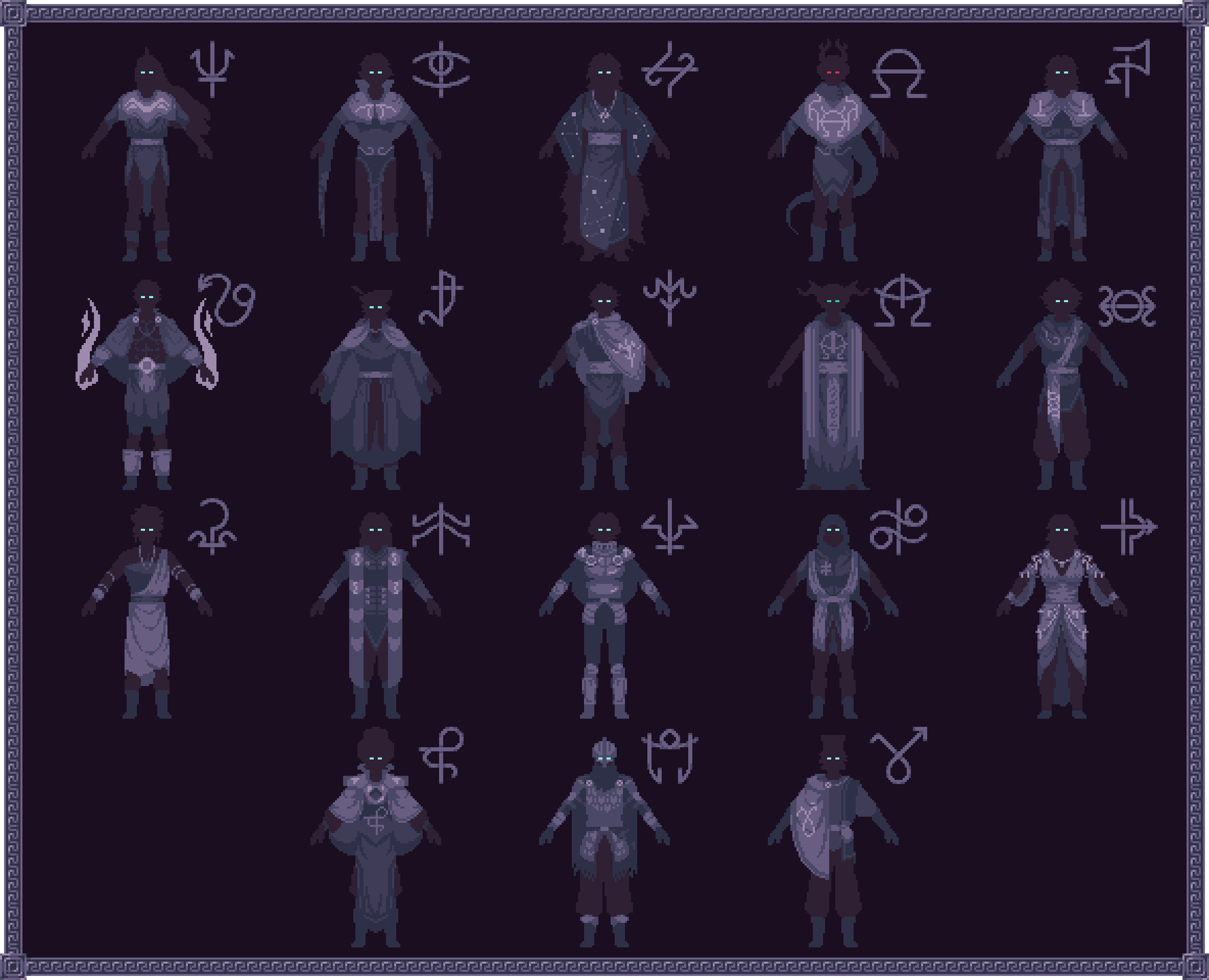Mirathae
The Mirathae are a group of Niranni, partially descended from humanity, who inhabit the city of Faenradama and the surrounding lands. The Mirathae have a wider height variance when it comes to Niranni standing 5’9-6’3 in males, and 5’7-6’0 in females. They are viewed as impure by many of the other Niranni groups due to their inheritance of brown eyes having the purple eyes and grey eyes faded to extreme rarity. They are fair-skinned and have crowns of gold, brown, and red and in some rare cases silver-grey. Mirathae tend to have neck-length to shoulder-length hair. They also grow facial hair to medium length and take pride in the ability to make it well groomed. Unmarried individuals usually wear their hair unbound or loose whereas most married couples have their hair tied in some fashion. They are all around hairier than their full-blood kin.
Government
In the early days of the Kingdom of Faenradama, the kingdom was ruled by a council of the various chiefs of the Mineyai Clans who elected a leader from amongst their ranks. The elected leaders began building up centralization, and eventually, the first dynasty was born, where the clan leaders elected members of the ruling family. In the later ages, there was a diarchy born of the mingling of the Divalera and the royal family, leading to the second kingship going to the second kid of the royal family and becoming passed down to the second kid always or the next closest person of the same generation. In modern times, the Mirathae have reverted to a simple one-king system due to the extensive mixing of the two groups. The modern kings are elected not from the whole clan anymore but rather from the children of the former king.Associations
The Mirathae believe that various beasts exemplify certain traits; thus, one will learn that trait if one reveres the beast. They also believe that if they decorate objects with images and motifs, the animal enhances them and their owners.- Cows - Strength
- Rams - Resilience
- Sheep - Kindness
- Fish - Beauty
- Serpents - Wisdom
- Owl - Intelligence
- Cats - Grace
- Dogs - Loyalty
- Bears - Wild Strength
- Wolves - Lawful
Naming Traditions
Feminine names
Namesanil, Senatisse, Senaanse, Merezorani, Kasesedar, Keyatana, Senaydse, Senakaesse, Nasekarr, Senaerse, Odseil, Adirse, Senatase, Risse, Kaseanose, Zorun, Saalakur, Kaasegun, Erikim, Erian
Masculine names
Farnial, Hittivi, Anareyen, Anaridar, Odiane, Oditase, Hikkorin, Farodiil, Gunoru, Keyuden, Kavasay,
Namekasara, Fatezuni, Kirdesidura, Hirivi, Kaifeorar, Arimanol, Finar, Nonav, Saadadan, Saranora, Nediraru
Namekasara, Fatezuni, Kirdesidura, Hirivi, Kaifeorar, Arimanol, Finar, Nonav, Saadadan, Saranora, Nediraru
Family names
The Clans of Mirathae usually derive from the Mineyai of the city of Faenradama, Legendary Warriors who were fearsome and great. Some clans fall outside this system, these clans usually have names describing a prominent feature of the clan like Sediraura (Silver-Haired) or Minasira (Great Strength). When a non-Mineyai clan’s house head marries into the Mineyai Clans they become a subclan. When writing out the full name of someone and their subclan the subclan would come before the Mineyai clan. An example would be Keyudan (Father) Hikkorin (Personal Name) ef Sediraura-Zaranili.
Other names
Mirathae names come in three parts. The Patronym, aka who the person’s father was/is is mostly excluded in everyday life; the Personal name which is usually short phrases or sentences to describe the person and is given around 4 years old; and the Clan name and sub-clan name if they’re a part of one. An example of a Mirathae name would be Hittifi Senaerse ef Rudarasi, Senaerse, Daughter of Hittivi of the Rudarasi.
Culture
Major language groups and dialects
The Mirathae have a distinct language that derives from old Ukori languages in the region that is influenced by the Miari languages around them.
Shared customary codes and values
In modern Mirathae culture, they see value in truth and in sticking to one's word, tolerance of different groups while retaining themselves, strength as a virtue in mind and body, and authority, mortal and divine, but they do not link the two. When a king makes a judgment, it isn't the will of the divine; it is the king's will, so they value not deferring blame or shirking responsibilities.
Common Dress code
The clothes of the Mirathae consist of multiple layers of heavy textiles, typically wool and linen, with fur as the final layer. Many Mirathae, urban and Rural, men and women, wear a medium to long skirt called Anakiran. Some of their warriors wear long sheepskin cloaks.
Art & Architecture
The architecture of the Mirathae heavily features solid basic designs with later embellishments and added art. They typically use stone for the first floors of many buildings, usually larger than their upstairs floors, and wood for the second and higher floors. The buildings are all centered around a central fireplace that helps to spread the heat throughout the building. Residencies typically have a sauna on the periphery of the home near the kitchen. Mirathae cities are typically built in a spider web fashion or circular fashion, expanding layer by layer in a way that winds up with circular roads surrounding the central buildings of the communities or subcommunities.
Foods & Cuisine
The cuisine of the Mirathae is heavy in protein and heavy in the stomach. The Mirathae eat large amounts of red meat dishes and bread. A staple dish of the Mirathae is a heavy beef or venison stew with dense porous bread to dip with. The Mirathae vegetables are usually root vegetables that are eaten alongside or mixed into the main courses of meats and bread. They usually mix the beef's juices. The Mirathae also tend to eat lots of fish, but they never mix them together with other foods, usually having the fish on its own plate and then a second plate for side dishes.
Historical figures
Minzur is a significant figure in the history of the Mirathae.
Related Organizations




So based